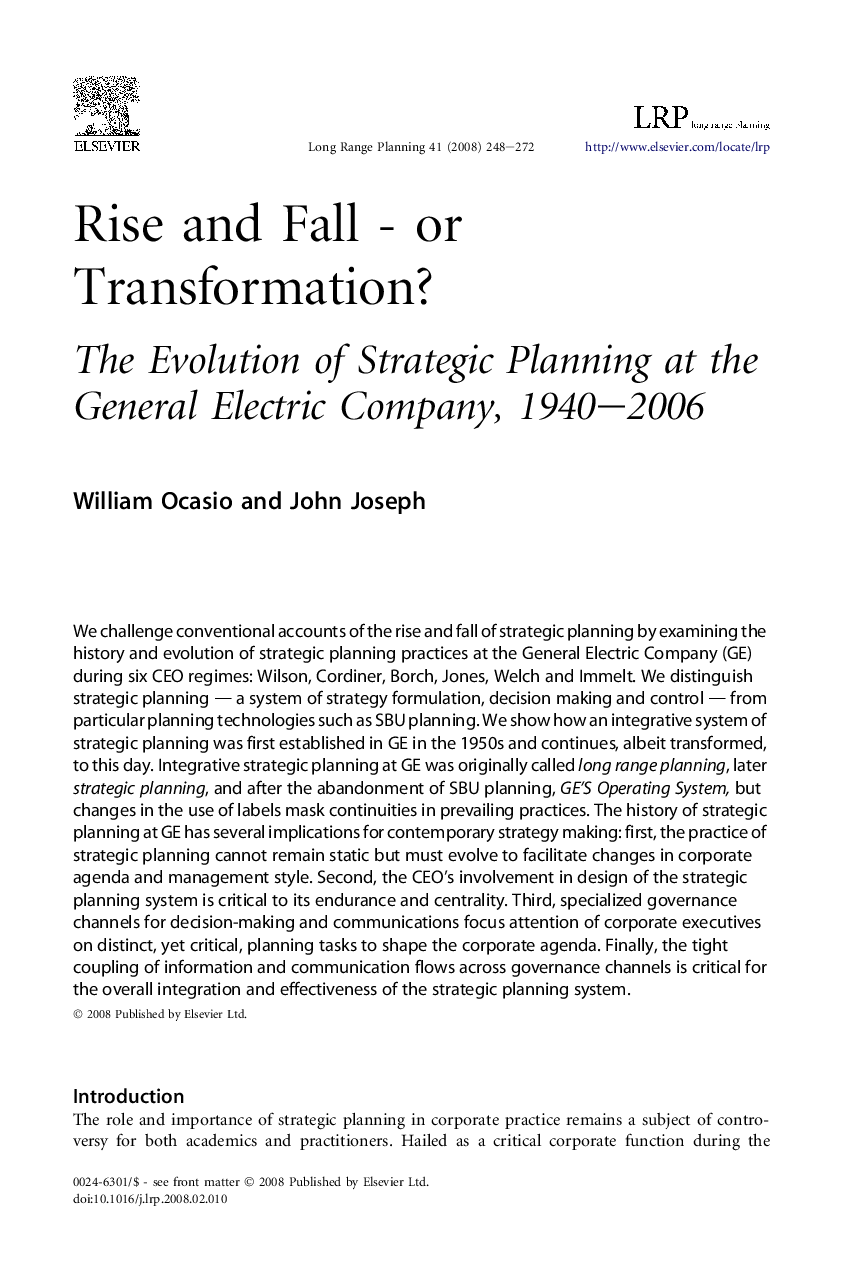| Article ID | Journal | Published Year | Pages | File Type |
|---|---|---|---|---|
| 1021557 | Long Range Planning | 2008 | 25 Pages |
We challenge conventional accounts of the rise and fall of strategic planning by examining the history and evolution of strategic planning practices at the General Electric Company (GE) during six CEO regimes: Wilson, Cordiner, Borch, Jones, Welch and Immelt. We distinguish strategic planning — a system of strategy formulation, decision making and control — from particular planning technologies such as SBU planning. We show how an integrative system of strategic planning was first established in GE in the 1950s and continues, albeit transformed, to this day. Integrative strategic planning at GE was originally called long range planning, later strategic planning, and after the abandonment of SBU planning, GE'S Operating System, but changes in the use of labels mask continuities in prevailing practices. The history of strategic planning at GE has several implications for contemporary strategy making: first, the practice of strategic planning cannot remain static but must evolve to facilitate changes in corporate agenda and management style. Second, the CEO's involvement in design of the strategic planning system is critical to its endurance and centrality. Third, specialized governance channels for decision-making and communications focus attention of corporate executives on distinct, yet critical, planning tasks to shape the corporate agenda. Finally, the tight coupling of information and communication flows across governance channels is critical for the overall integration and effectiveness of the strategic planning system.
